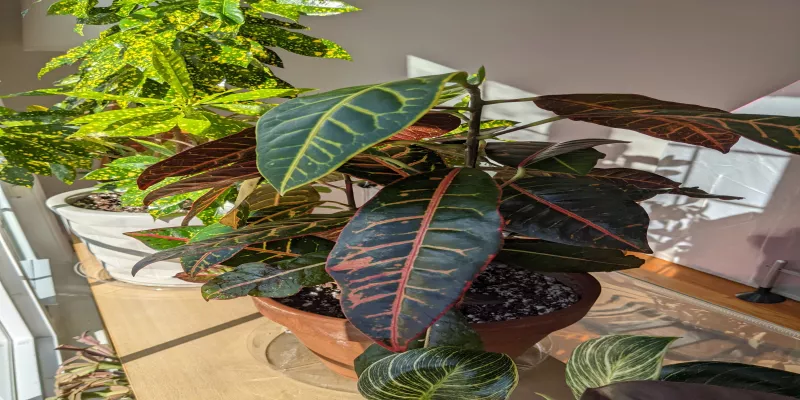Croton Watering Guide

The three main pillars of plant care are water, light, and nutrients. Water is one aspect where plant lovers often get it wrong. Watering your beloved Croton regularly makes plant owners feel like they are taking active care of their plants. Sadly, this can lead to overwatering. Crotons are known for their colorful, glossy leaves, making them a popular choice for indoor and outdoor settings. However, their water requirements can be a bit tricky to navigate. In this post, I'll explore the nuances of Croton watering, how to recognize signs of both underwatering and overwatering, and the essential tools for maintaining optimal soil moisture.
Understanding Croton Watering Needs
Crotons, like many houseplants, are native to tropical regions They have specific water requirements that mimic their natural habitat. It's essential to understand these needs and provide appropriate care so you can help your Croton thrive.
Signs of Croton Underwatering
- Dry Soil: First, check if your soil looks dry. If it does you should use a finger to check if the soil feels dry down to an inch or two. It’s important to allow soil to dry out a bit before watering but you don’t want it to dry completely.
- Drooping Leaves: Both of my Crotons (a Petra and Gold Dust) have a flair for the dramatic when they start to get thirsty. The leaves begin to droop when they need water. On the plus side, this is a highly visible sign and the leaves usually perk up after watering. See an example of a droopy Croton Petra below.
- Leaf Issues: When a Croton is underwatered sometime the edges of the leaves may begin to turn brown. In addition, an abrupt dropping of leaves (plural, not just one) can also be a sign of underwatering.
Signs of Overwatering a Croton
- Soggy Soil: If your soil stays consistently wet for many days without drying, then you may be overwatering your Croton.
- Presence of Mold, Fungus, or Fungus Gnats: With overly wet soil a few problems can develop. Both mold and fungus find overly moist soil to be a great place to grow. In addition, even if you don’t see mold or fungus, the presence of fungus gnats could also be an indicator that you are watering too heavily.
- Yellowing Leaves: Overwatering can lead to your Croton developing yellowing leaves, especially if the roots are consistently waterlogged.
Best Practices for Croton Watering
Before we even get to the best practices, you first need to set yourself up for success. This means having an appropriately sized pot, which is between one and two inches larger than the root ball. The pot must also have drainage holes. You can easily add drainage to most pots by following my tutorial. Finally, you need a well draining potting soil. Then you can follow these best practices.
- Check if it Needs Water: First check that the top inch of soil is dry before you water. If it’s not, then check again in the next day.
- Water Thoroughly: It’s better to water thoroughly than to give small sips of water. Pour water until you see water draining from the bottom of the pot. This ensures that the roots receive sufficient hydration.
- Use Room Temperature Water: Sometimes Crotons can be a bit sensitive, so it’s best to avoid extremely cold or hot water; and strive for room temperature water instead.
- Maintain a Consistent Schedule: Establish a regular watering schedule based on your Croton's needs, but always check the soil's moisture level before watering.
- Dump Any Sitting Water: If you have saucer under your pot, never allow it to have standing water. If you see water, just empty it out to prevent any issues caused by overwatering.
- Seasonal Adjustment: Most plants go dormant in the winter even indoors. It’s triggered by lack of light. During the dormant season you should reduce watering because your Croton is not actively growing.
Croton Watering Tools
You really don’t need any specialty tools to water your Croton. I personally love using a cheap soil moisture meter. They take the guess work out of soil moisture and it also keeps your hands and nails clean.
Hopefully this post answers your questions about watering your Croton. If you have additional questions, post them in the Comments section.
Add new comment